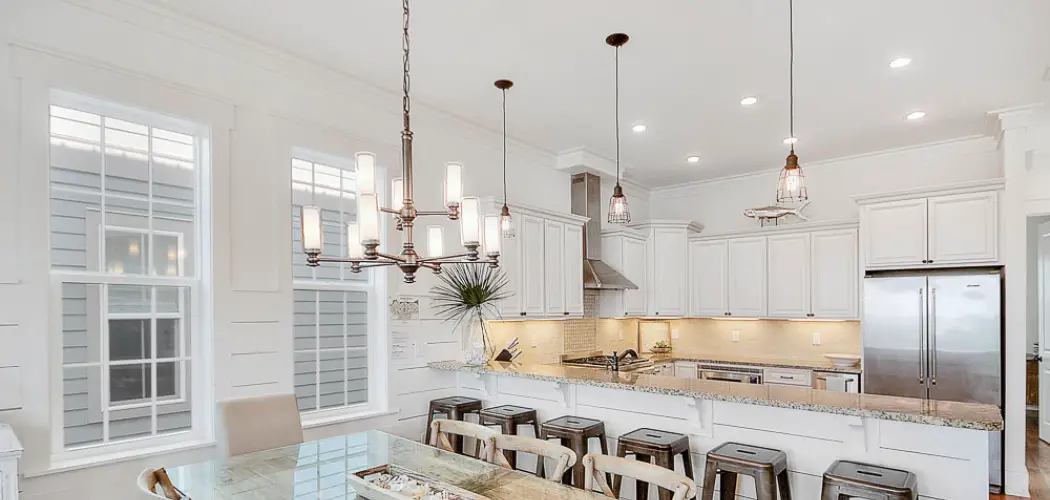One of the main reasons to install recessed lighting in your kitchen is because it provides an aesthetically pleasing and modern look. Recessed lights are mounted flush with the ceiling, making them a sleek and seamless addition to any room. In addition to their design appeal, they also provide effective task lighting for specific areas in your kitchen.
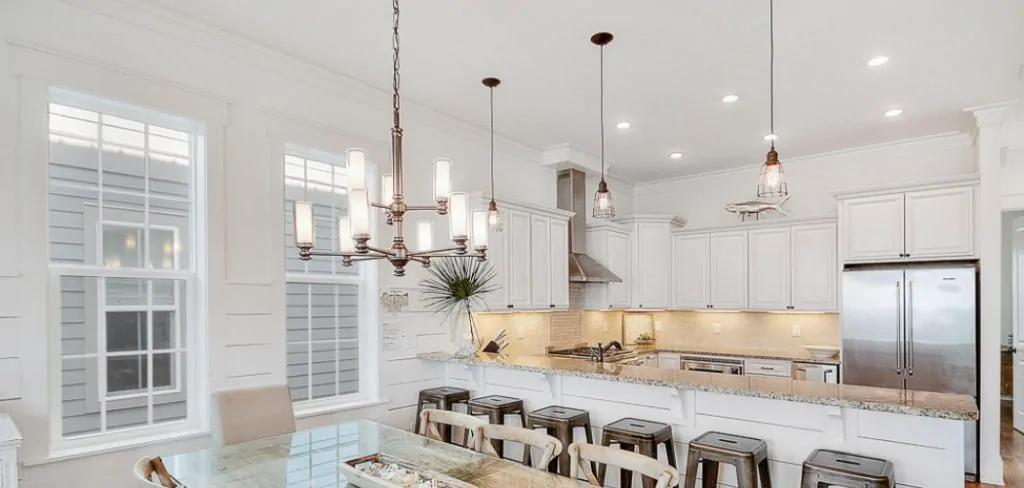
The main advantage of placing recessed lighting in kitchen is that it provides a clean and modern look to the space. Recessed lighting fixtures are installed into the ceiling, creating a seamless and streamlined appearance.
This type of lighting also helps to maximize space in the kitchen, as there are no bulky light fixtures taking up valuable overhead space. In this blog post, You will learn in detail how to place recessed lighting in kitchen.
Step-by-step Instructions for How to Place Recessed Lighting in Kitchen
Step 1: Inspect and Measure Your Kitchen
Before installing recessed lighting in your kitchen, it’s important to take some time and carefully inspect the space. Make sure that you have enough room for the lights and determine where they would be best placed. Use a measuring tape to accurately measure the distance between potential light locations.
Step 2: Choose the Type of Recessed Lighting
There are several types of recessed lighting available, including standard, baffle, and eyeball. Standard lights provide general illumination, while baffle lights reduce glare. Eyeball lights can be adjusted to direct light in a specific direction. Consider the function and style you want for your kitchen when choosing the type of recessed lighting.
Step 3: Gather Materials
Before starting the installation process, gather all the necessary materials. These may include recessed light fixtures, wiring, a drill, and a saw for cutting holes in the ceiling. It’s also important to have safety equipment such as gloves and goggles.
Before beginning any electrical work, turn off power to the kitchen at the circuit breaker. This is crucial for safety and to avoid any potential accidents or injuries.
Step 4: Determine the Location of Ceiling Joists
Locate the ceiling joists in your kitchen using a stud finder. This will help you determine where you can safely place the recessed lights without interfering with any structural supports. Using a pencil, mark the locations of each recessed light on the ceiling. This will act as a template for cutting holes in the ceiling.
Step 5: Cut Holes in Ceiling
Using a saw or a drywall saw, carefully cut out holes where you have marked for the recessed lights. Be sure to follow the manufacturer’s instructions for hole size and spacing between lights. Once the holes are cut, install electrical wiring for each light. This may involve running wires through the ceiling and connecting them to a power source.
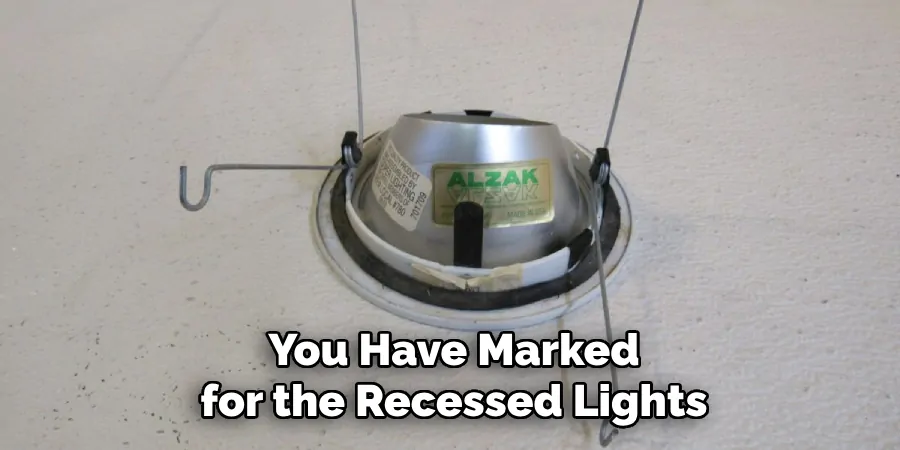
Step 6: Install Light Fixtures
Carefully insert the recessed light fixtures into the holes in the ceiling, following the manufacturer’s instructions. Be sure to secure the fixtures in place according to the instructions as well.
After all the light fixtures are installed, turn the power back on at the circuit breaker and test each light to ensure they are functioning properly. If needed, make any adjustments to the direction or angle of the lights for optimal placement.
By following these step-by-step instructions, you can successfully install recessed lighting in your kitchen. Remember to always prioritize safety and consult a professional if you are unsure of any steps or encounter any difficulties during the installation process.
Safety Tips for How to Place Recessed Lighting in Kitchen
- Consider the size and type of recessed lighting that you want to install in your kitchen. LED lights are ideal for kitchens as they emit a bright, clear light and also save energy. Make sure to choose fixtures that are rated for use in damp locations.
- Ensure the safety of your family by using an AFCI (Arc Fault Circuit Interrupter) breaker or outlet when installing recessed lighting in your kitchen. This device helps prevent electrical fires by detecting any abnormal current flow.
- Plan the placement of your recessed lights carefully to avoid any potential hazards. Keep them at least 3 feet away from water sources like sinks, stoves, and countertops.
- If you are installing recessed lighting near insulation, make sure to use IC (Insulation Contact) rated fixtures. This ensures that the lights are in contact with insulation without generating too much heat and causing a fire.
- Always turn off the power to your kitchen before beginning any installation work. Use a voltage tester to make sure there is no current running through the wires.
- To avoid any issues, follow manufacturer’s instructions carefully while installing recessed lighting in your kitchen. Make sure to use the correct tools and equipment for the installation.
- It is recommended to hire a professional electrician if you are not confident in your knowledge and ability to install recessed lighting. They will ensure that the lights are properly installed and do not pose any safety hazards.

By following these safety tips, you can ensure that your recessed lighting is installed safely in your kitchen. Remember to always prioritize the safety of yourself and your family when working with electricity.
What Are the Benefits of Using Recessed Lighting in a Kitchen?
Recessed lighting has become a popular choice for kitchen lighting in recent years. It involves installing lights into the ceiling instead of hanging them like traditional light fixtures. But what makes it so appealing? Let’s explore the benefits of using recessed lighting in a kitchen.
1. Modern and Sleek Design
One of the major advantages of recessed lighting is its modern and sleek design. By being recessed into the ceiling, these lights blend seamlessly with any kitchen style or decor. They also create a cleaner and less cluttered look compared to traditional light fixtures that can make a space feel smaller and more crowded.
2. Versatile Lighting Options
Recessed lighting is not limited to one type of fixture or bulb, giving you a wide range of lighting options to choose from. You can opt for LED bulbs, which are energy-efficient and long-lasting, or halogen bulbs that provide brighter light. Additionally, you can also choose between different sizes and shapes of recessed lights to fit your kitchen’s unique lighting needs.
3. Improved Illumination
One of the biggest advantages of using recessed lighting in a kitchen is its ability to provide focused and even lighting. Unlike traditional light fixtures that cast shadows or create hot spots, recessed lights are strategically placed to evenly distribute light throughout the space. This eliminates dark corners and provides better visibility for cooking, preparing food, and completing other tasks in the kitchen.
4. Space-Saving Solution
If you have a small kitchen or limited ceiling height, recessed lighting can be a great space-saving solution. By being installed into the ceiling, it frees up valuable space that would otherwise be taken up by hanging light fixtures. This is especially beneficial for kitchens with low ceilings, as recessed lighting doesn’t protrude downward and make the space feel smaller.
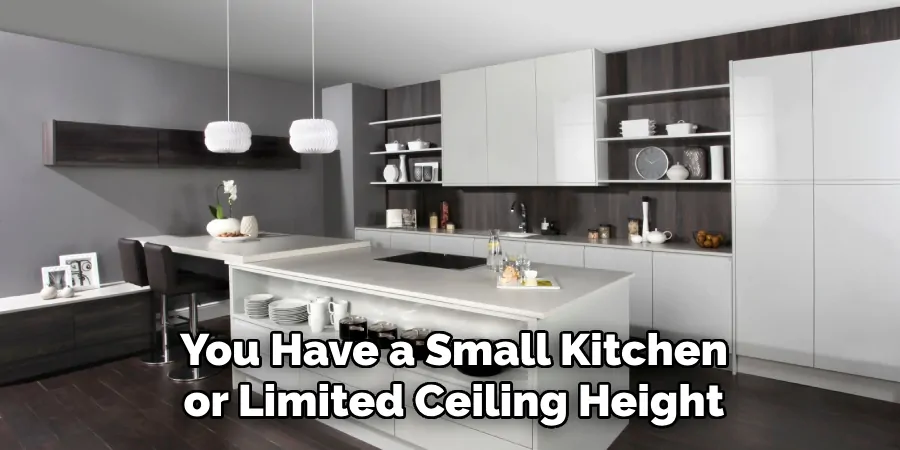
5. Energy Efficiency
Another major benefit of recessed lighting is its energy efficiency. LED bulbs, which are commonly used in recessed lighting, use significantly less energy than traditional incandescent bulbs. This not only helps reduce your utility bills but also makes it a more environmentally friendly choice.
6. Easy Maintenance
Recessed lighting is relatively easy to maintain compared to traditional light fixtures. Unlike hanging lights that need frequent dusting and cleaning, recessed lights are protected within the ceiling, making them less prone to collecting dust and grime. And in case a bulb needs to be replaced, it is as simple as unscrewing the old one and screwing in a new one.
Are There Any Specific Guidelines for Spacing Between Each Recessed Light?
Spacing between recessed lights is an important factor in achieving a balanced and aesthetically pleasing lighting layout. While there are no hard and fast rules for spacing between each recessed light, here are some general guidelines to keep in mind:
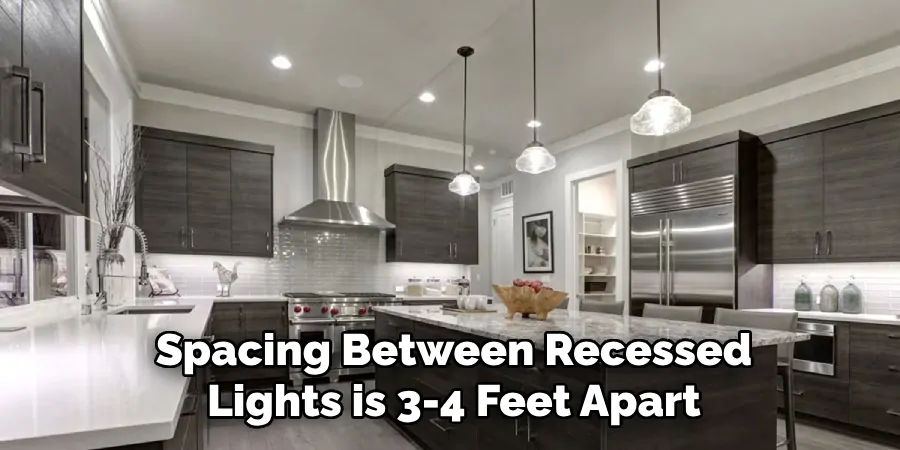
- Uniform Spacing: The most commonly recommended spacing between recessed lights is 3-4 feet apart, with around 6 inches of space from the wall. This helps to create a uniform and evenly distributed lighting pattern.
- Ceiling Height: The height of your ceiling can affect the spacing between recessed lights. For lower ceilings, you may need to space the lights closer together to achieve adequate coverage, while higher ceilings may require more distance between each light.
- Area Size and Shape: The size and shape of the area you are lighting also play a role in determining spacing. For larger rooms, more recessed lights may be needed to adequately light the space. In irregularly shaped rooms, it is important to consider where the lights will be placed for optimal coverage.
- Task Lighting vs Ambient Lighting: The purpose of your recessed lights can also influence the spacing. For task lighting, such as in a kitchen or workspace, lights may need to be placed closer together for targeted lighting. In contrast, for ambient lighting in a living room or bedroom, lights can be spaced further apart.
- Personal Preference: Ultimately, the spacing between recessed lights is also a matter of personal preference and style. Some people prefer more closely spaced lights for a more dramatic and concentrated effect, while others may prefer a more evenly spaced layout.
It is important to keep in mind that while these guidelines can be helpful, they are not set in stone. The best way to determine the spacing between recessed lights is by experimenting and adjusting as needed based on your specific lighting needs and preferences.
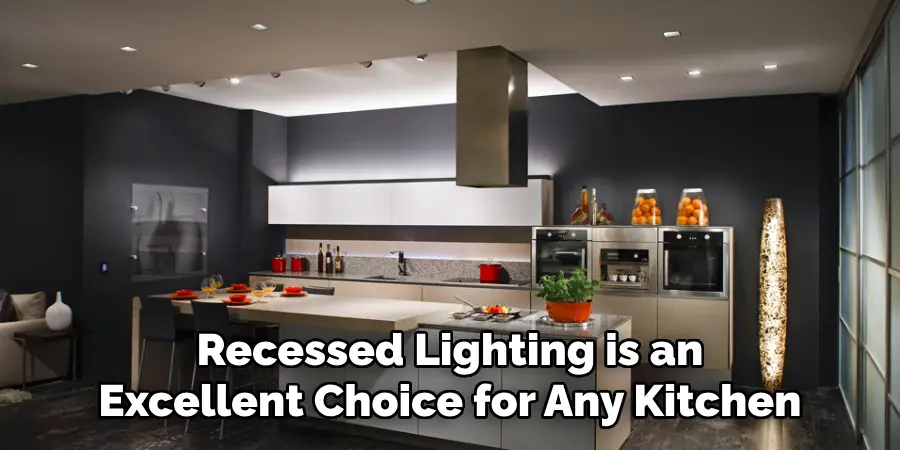
Conclusion
In conclusion, recessed lighting is an excellent choice for any kitchen. It provides ample light, adds a touch of modernity and elegance to the space, and allows for flexibility in terms of placement and design. By following the steps outlined in this blog, you can confidently install recessed lighting in your kitchen without any hassle.
Furthermore, there are various considerations to keep in mind when deciding on placement, such as the kitchen layout, task lighting needs, and overall aesthetic of the space.
It is essential to strike a balance between functionality and style when choosing the location and number of recessed lights. I hope this article has been beneficial for learning how to place recessed lighting in kitchen. Make Sure the precautionary measures are followed chronologically.

